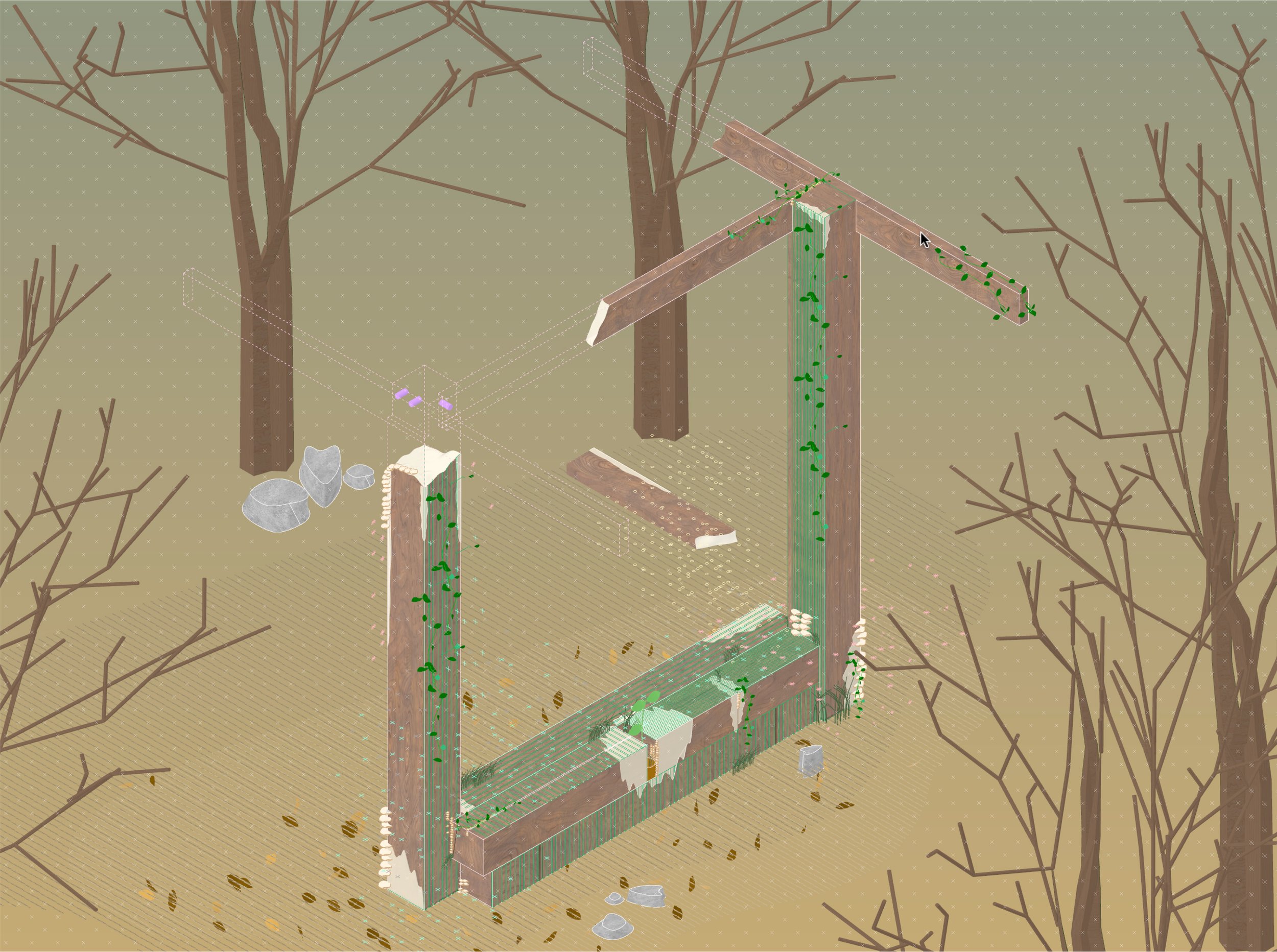5. From Wood to Tree
From Wood to Tree is an open air pavilion that explores environmental methodologies for returning lumber to the forest by examining the qualities of deadwood and degradation as a possibility for design.
I sometimes wonder whether a tree’s real task on Earth isn’t to bulk itself up in preparation to lying dead on the forest floor for a long time.
- Richard Powers, The Overstory
At its origin, forest management practices found disturbances to the geometric ordering of the forest as threats. An above ground geometric uniformity and neatness extended to the forest floor requiring underbrush, deadfalls, and snags to be removed. Currently, logging practices continue to extract logs to be processed for lumber. Yet, this absence of deadwood, or woody biomass is a factor leading to thinner, less nutritious soils and eventually less healthy forest ecosystems.
Much has been said about the making of wood, and yet one of its most prescient qualities as a material is its ability to degrade. In bio-degradation, larger logs, or the woody parts of trees, composed primarily of lignin and carbon, decompose slowly while offering refugia to a variety of living things. Forest Deadwood, such as snags and nurse logs invite the habitation of saplings, critters, and symbiotic wood-processing fungi along with their airborne spores. Nevertheless, the matter of unmaking or de-construction is most often examined from a preventative stance— how do we prevent biotic processes from impacting beloved wood products or structures?
From Wood to Tree takes on bio-materiality to design synchronously with the degradation of wood, its processes and to intervene in cycles of building waste, carbon, respiration, and forest health. The installation begins from tree to wood via the processing of felled trees at the University of Virginia into lumber. Set between a creek and the backdrop of a woody site, sawmilled lumber pieces are arranged in a uniform and ordered language, organized as a grid. This arrangement enables ecological and biotic processes to form, inhabit, and de-construct the wooden structure over an extended time period. Each modular piece of wood includes a series of surfacing and textural manipulations as well as a series of milled penetrations that improve the conditions optimal for fungal environments to juxtapose the possibility of human inhabitation with the origins of non-human inhabitations. Through the re-insertion of woody biomass into this woody environment, a variety of living agents enable the structure’s cycling from wood, to refugia, to nutrient, to soil, to mushroom, to fungal spore, and back, eventually, to tree again.
Team
Liz Gálvez
Visiting Critic, Rice University School of Architecture
Director, Office e.g.
Ignis Zhang
Design Research Assistant, Rice University School of Architecture
Meredith Magness
UVA Project Manager, Bachelor of Science in Architecture Candidate ’22
UVA Workshop Participants
Brandon Bonner, Abby Hassell, Jacob McLaughlin, Liv Orlando

